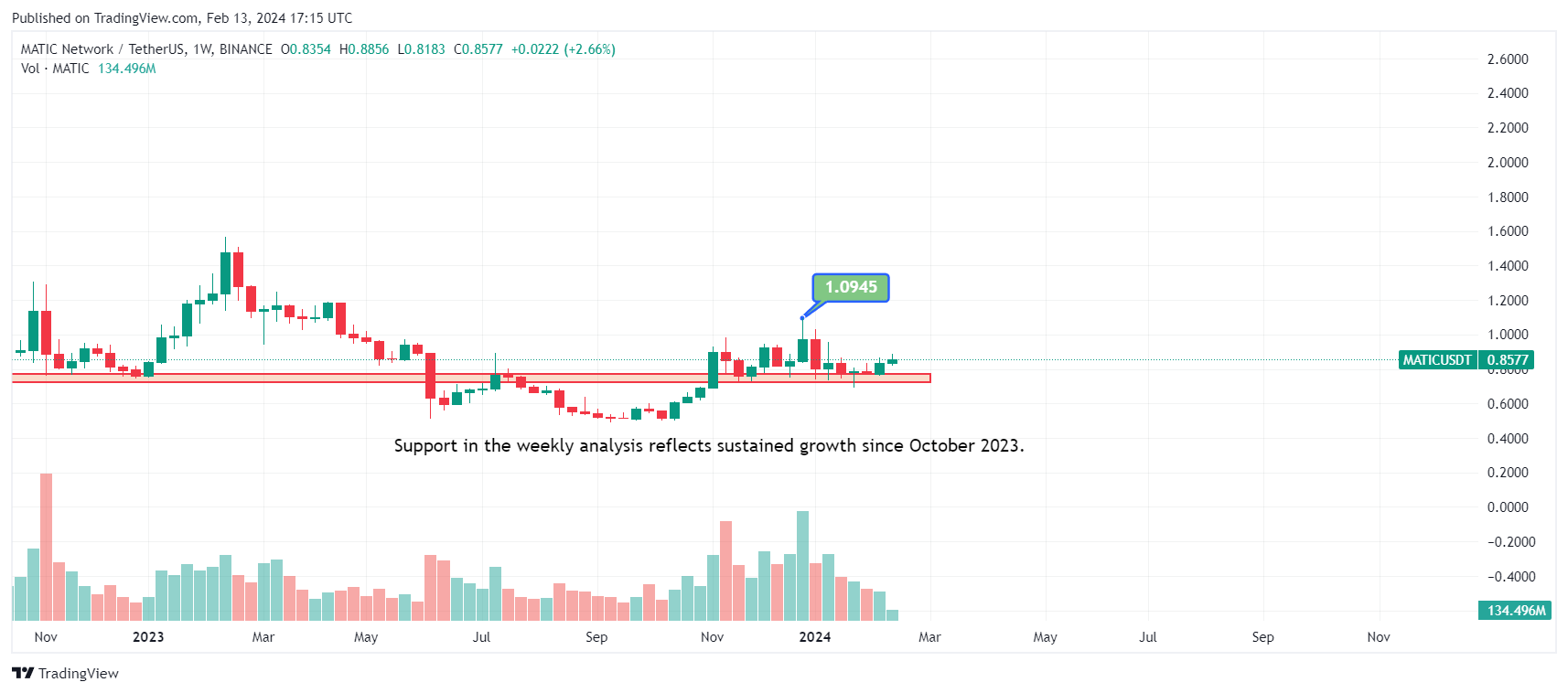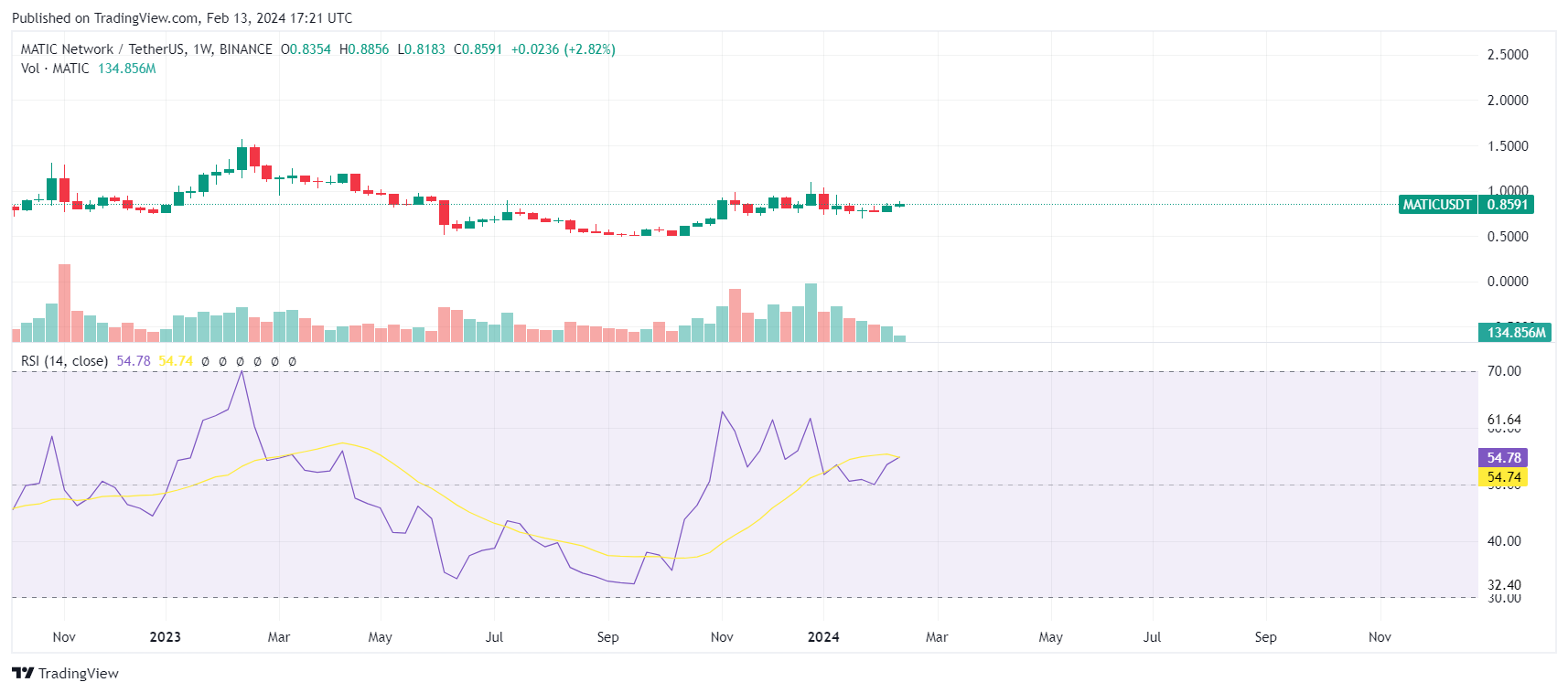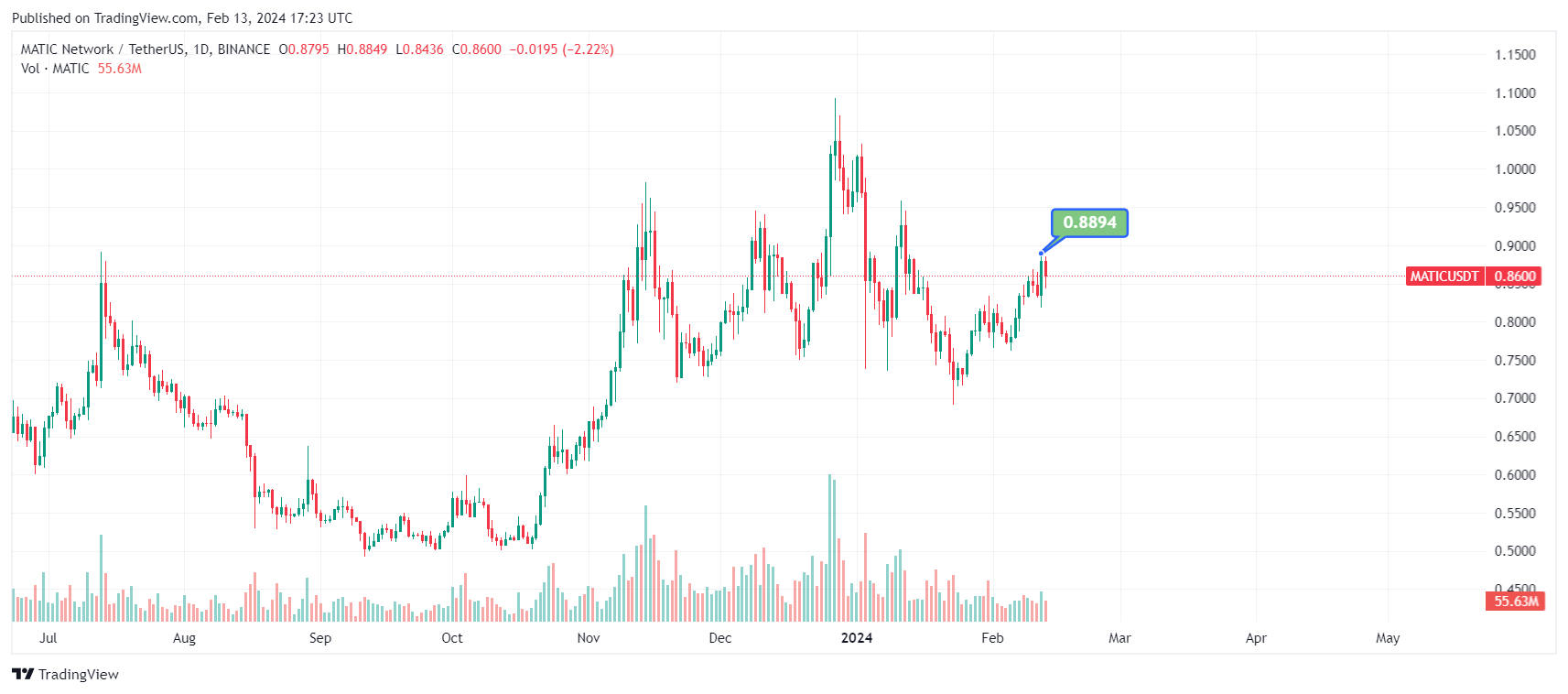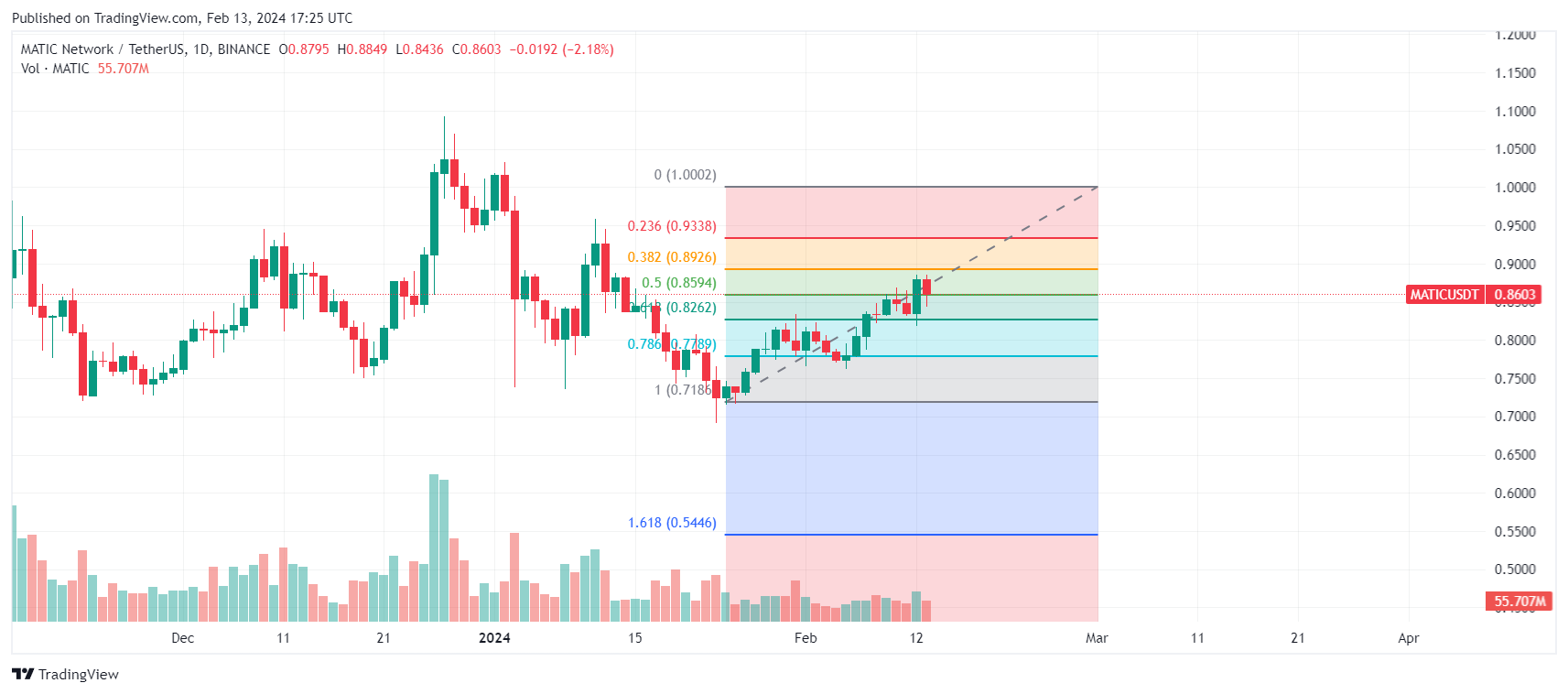- MATIC remains above support after breakout in November 2023, indicating stability and growth despite Fibonacci resistance.
- Overcoming 0.382 Fibonacci resistance could lift MATIC 13% towards $0.92, while a rejection would imply a 12% drop to $0.72.
For Polygon (MATIC), holding above long-term horizontal support after its breakout in November 2023 marks a period of stability and upside potential. Although MATIC overcame a short-term downtrend, it failed to pass a Fibonacci resistance level, showing difficulty in building momentum.

MATIC stability above support on weekly analysis reflects steady growth since October 2023, reaching an annual high of $1.09 in December. Despite a subsequent decline, MATIC remains above this important area, now turned support.
A rebound in January 2024, evidenced by an extended lower wick, indicates significant support in these prices, although it remains under long-term downward resistance, in place for 780 days.

The weekly Relative Strength Index (RSI), being above 50, offers a positive outlook, indicating a slight advantage for buyers. This index is essential for traders when analyzing whether the market is in an overbought or oversold condition.

Although the weekly analysis points to a positive trend, the daily shows a more complex situation. MATIC has improved since January 23, overcoming a downward resistance and reaching a high of $0.87 on February 10.
However, it faced rejection at the 0.382 Fibonacci retracement level and has declined, bringing the RSI closer to the 50 boundary.

MATIC’s response to 0.382 Fibonacci resistance is key to defining its future price path. Overcoming this challenge could result in a 13% upside move towards resistance at $0.92, while a failure could lead to a 12% decline towards support at $0.72.
At the time of writing, MATIC is trading at $0.86
This analysis highlights a turning point for MATIC, contemplating the possibility of a change in its trend. The focus is on how MATIC will deal with upcoming resistance challenges, which could determine its near-term behavior.



